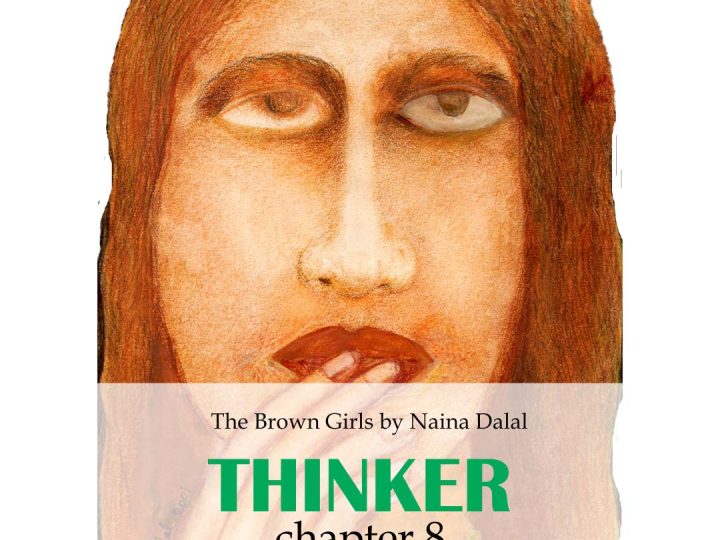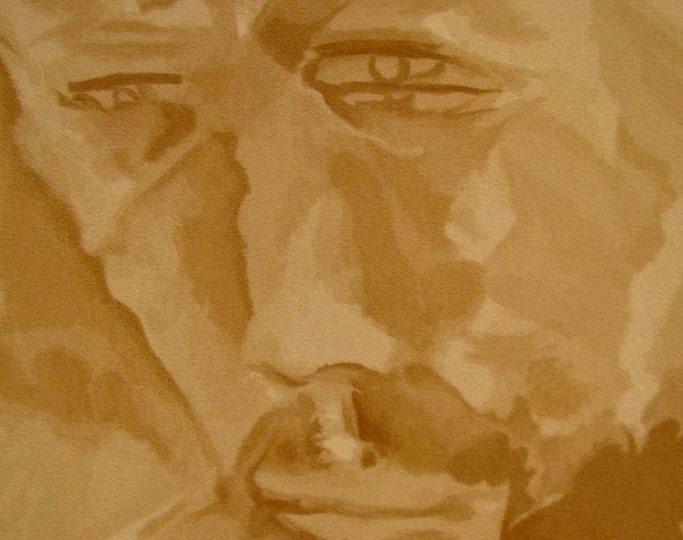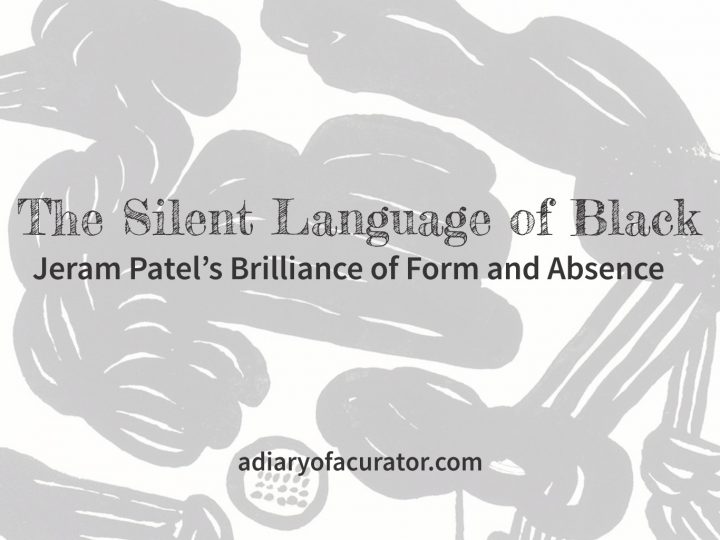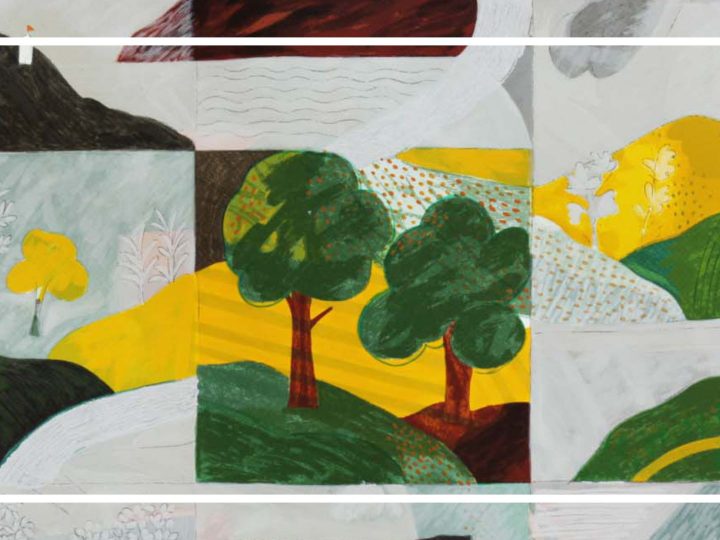A Curatorial Reflection: Feeling, Fading, Finding in Vipin’s Work
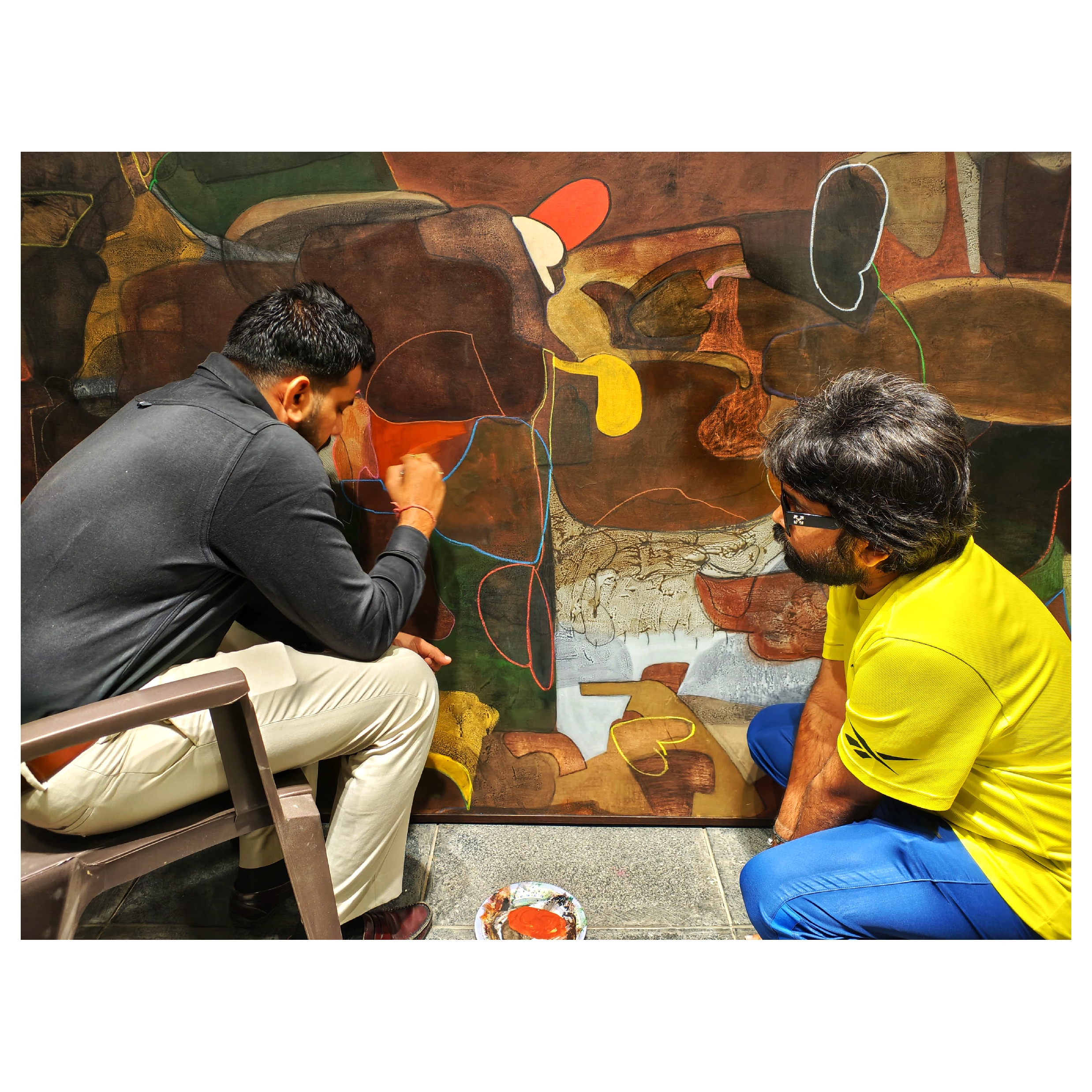
Vipin Singh Rajput (L) with Chaitya Dhanvi Shah (R)
What makes Vipin Singh Rajput’s work truly special is how he brings together scale, material, and subject through three distinct yet interconnected series. From works measuring 5 inches to 8 feet, he demonstrates remarkable control over size, medium, material, texture, line, and form. This expertise becomes the foundation of a new voice in Indian contemporary abstraction.
In this exhibition, Rang, Raakh aur Rishtey, Vipin presents three separate series, each with a different subject, but they are organically linked. This synthesis of concept, craft, and continuity is the unique strength of the show.
Having known Vipin Singh Rajput for over a decade, I have had the privilege to witness his evolution firsthand. This exhibition, more than any before, defines that journey.
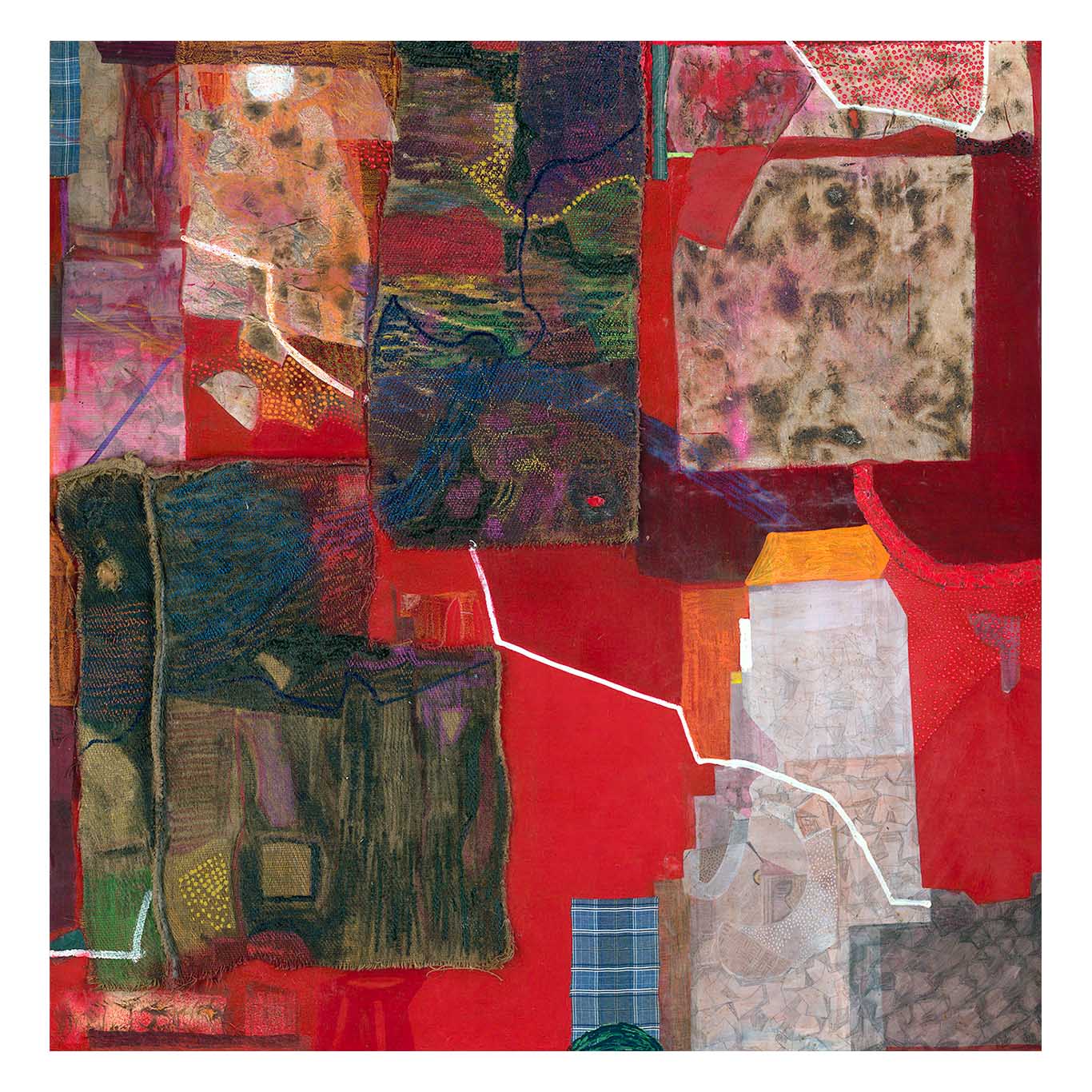
Vipin Singh Rajput, 65 x 65 in, Mix Media on Canvas

Vipin Singh Rajput, 36 x 47.5 in, Mix Media on Canvas
Compared to his earlier works, the evolution as an artist has been both drastic and dramatic. Then came Smriti-Sutra (relation of material), and the evocative Prakriti-Drishti (
This idea, where materials are not merely chosen for their physicality but for the memories they carry, is the conceptual and emotional core of Vipin Singh Rajput’s series. Old sarees, jute, soil, burnt surfaces, wire, rice paper, each material becomes a carrier of time, identity, and lived history.
This concept threads through every layer of the work, from his Rajput lineage and rural upbringing to musical rhythms, textural experimentation, and even his pandemic resilience. His abstraction is not decorative, it is a method of remembering. It allows memory to take shape without fixing it into a narrative, keeping it alive, open, and tactile.
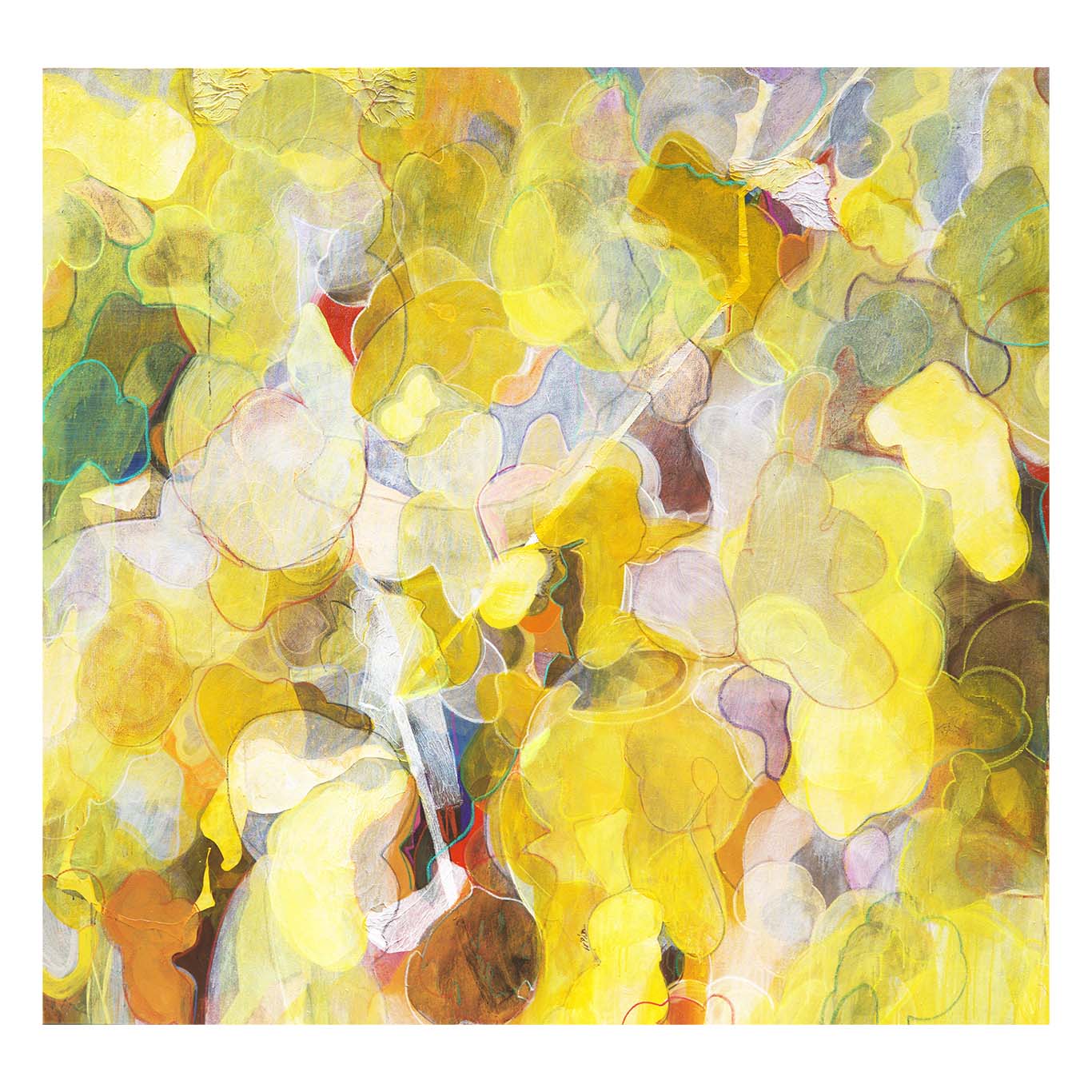
Vipin Singh Rajput, 70 x 71 in, Acrylic on Canvas
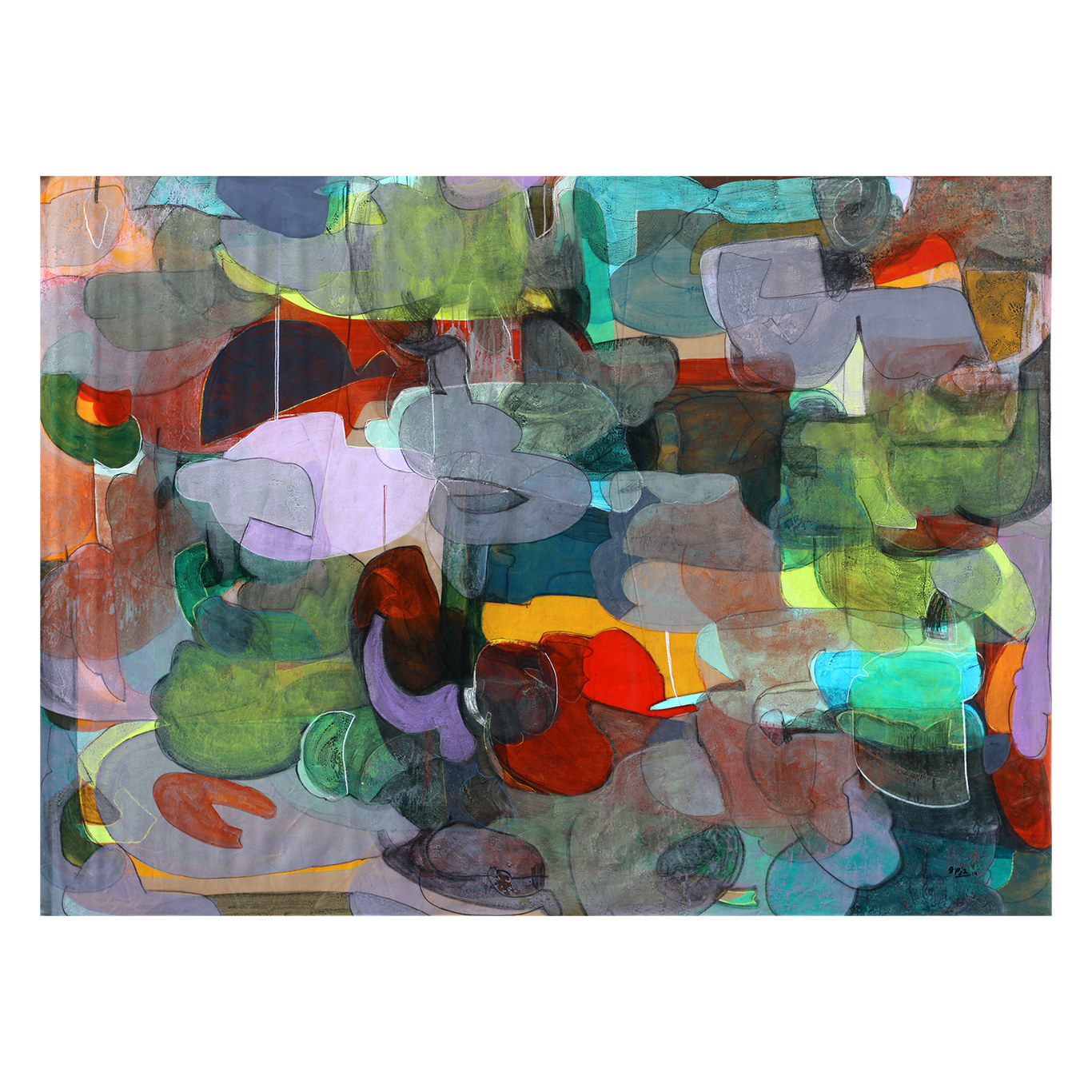
Vipin Singh Rajput, 67 x 91.75 in, Acrylic on Canvas
Smriti-Sutra is not only about representing life, but holding it, in fragments, in fibres, in flame-touched surfaces. In Vipin’s world, memory is not recalled, it is rebuilt, layer by layer, thread by thread, into forms.
Prakriti-Drishti is not just about what is seen, but how it is felt, filtered, and reformed into visual poetry. The bird’s-eye perspective becomes a metaphor for inner vision, where geometry, nature, and memory converge to form a deeply emotional and symbolic abstraction. This aerial or elevated perspective is a philosophy. It allows him to rise above reality and recompose it through organic forms, leaf-like bodies, floating geometries, and shifting layers of colour and light. He observes the world not just as it is, but as it feels, transforms, and remembers.
At the heart of this exhibition lies Vipin’s ability to turn material into meaning. Bandhan-Sutra
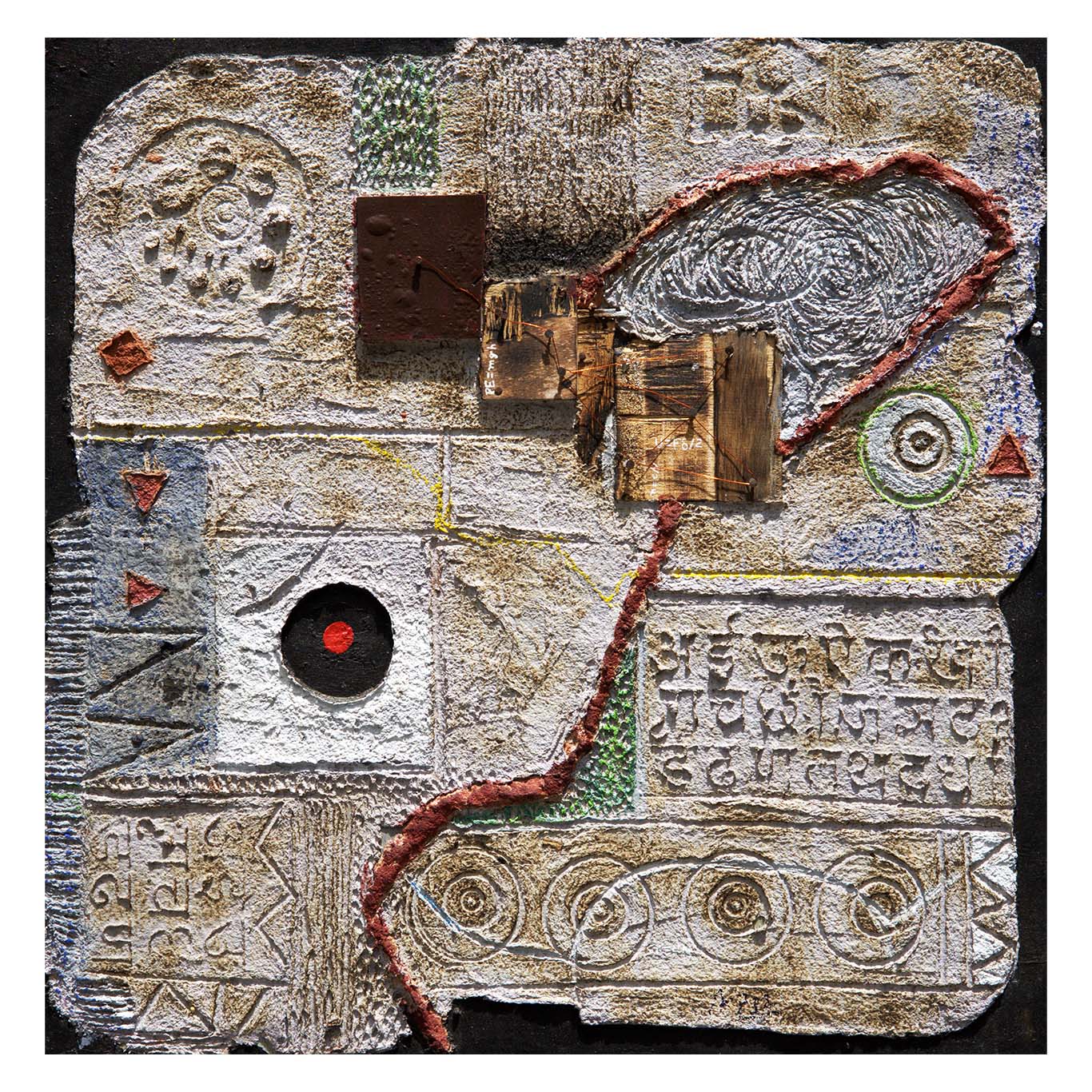
Vipin Singh Rajput, 24 x 24 in, Mix Media on Wood
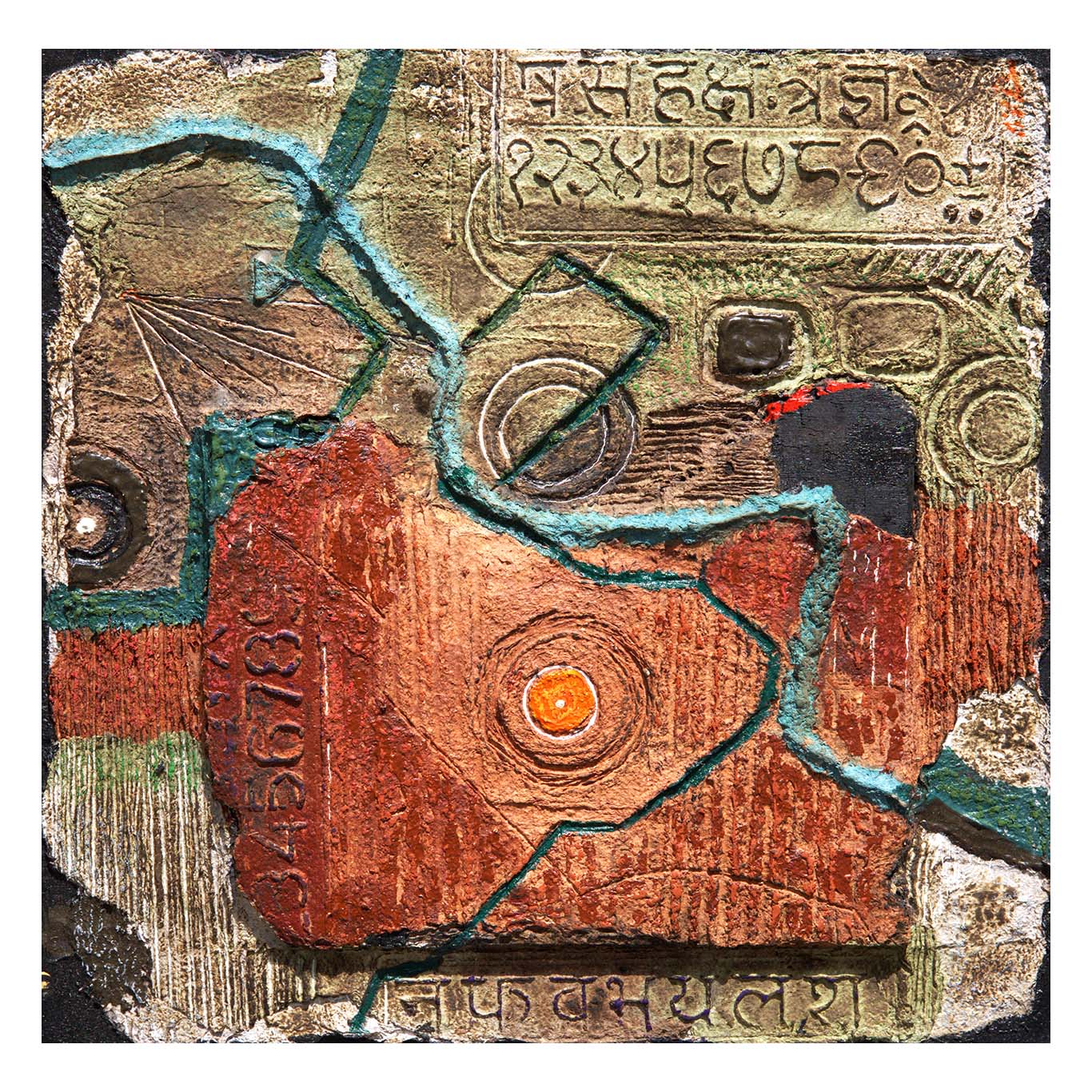
Vipin Singh Rajput, 18 x 18 in, Mix Media on Wood
His art does not separate subject and surface, they are tied through touch, texture, memory, and improvisation. In this way, material becomes emotional vocabulary.
What sets him apart is his ability to work across media, formats, sizes, and textures with consistency and integrity. That is what every true collector values, the growth of an artist, the maturity of form, and the courage to evolve.
This exhibition is not just a presentation of artworks, it is a statement of Vipin’s journey and vision. It is a landmark moment in his career, and we at DRS Arts Company® are glad to exhibit these works under the Future of Indian Art series at this pivotal juncture.
Photos and Text © Chaitya Dhanvi Shah


